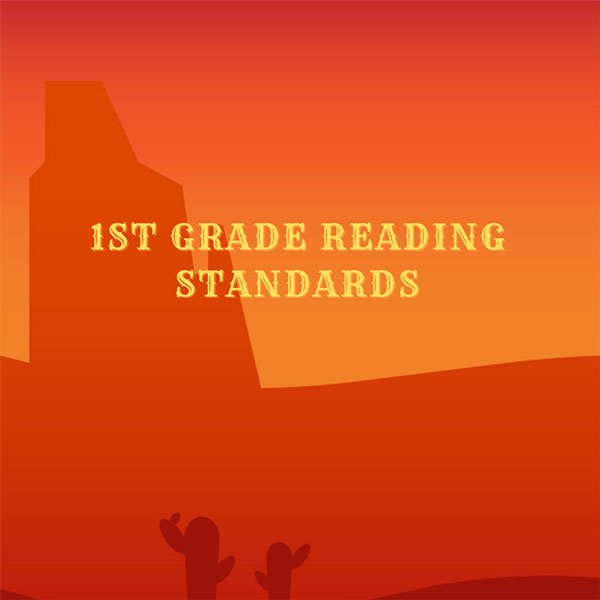1st Grade Reading Standards: What Your Child Should Know
First grade is a crucial time for developing reading skills in children. Children at this age typically learn how to read and comprehend simple texts. To ensure that first-grade students are on track with their reading skills, various states and organizations have established reading standards for this grade level. These standards outline the skills and knowledge that students should acquire by the end of first grade.
First-grade reading foundational skills standards cover various topics, including phonics, phonemic awareness, fluency, and comprehension. These skills are essential for building a strong foundation in reading and setting students up for success in later grades. The standards also emphasize the importance of reading with purpose and understanding, which helps students become critical thinkers and lifelong learners.
By understanding the first-grade reading standards, parents and educators can provide targeted support to help children develop these foundational skills. In this article, we will explore the first-grade reading standards established by various states and organizations and provide tips for supporting children’s reading development at home and in the classroom.
Phonological Awareness
Phonological awareness is a crucial skill that first-grade students must master to become successful readers. It refers to the ability to recognize and manipulate the sounds of spoken language, including words, syllables, and individual phonemes.
The Common Core State and TPRI Standards for first-grade reading emphasize the importance of phonological awareness. Specifically, students are expected to:
- Demonstrate understanding of spoken words, syllables, and sounds (phonemes).
- Distinguish long from short vowel sounds in spoken single-syllable words.
- Orally produce single-syllable words by blending sounds (phonemes), including consonant blends.
- Segment spoken single-syllable words into their complete sequence of individual sounds (phonemes).
- Isolate and pronounce the initial, medial vowel, and final sounds (phonemes) in three-phoneme (consonant-vowel-consonant, or CVC) words.
These skills are essential for decoding and reading fluency, as well as for spelling and writing. Teachers can help students develop phonological awareness through a variety of activities, such as:
- Phoneme segmentation and blending games
- Syllable counting and manipulation exercises
- Phonics-based instruction and practice
- Singing songs and reciting rhymes that emphasize sounds and syllables
By building a strong foundation in phonological awareness, first-grade students can become confident and skilled readers who are well-equipped to tackle more complex texts as they progress through elementary school.
Decoding and Word Recognition
First-grade students must have a solid foundation in decoding and word recognition skills. These skills are essential for students to become fluent readers and to comprehend what they read. Here are some of the key standards that first-grade students are expected to meet:
- Know and apply grade-level phonics and word analysis skills in decoding words
- Decode two-syllable words following basic patterns by breaking the words into syllables
- Read words with inflectional endings
- Demonstrate basic knowledge of one-to-one letter-sound correspondences by producing the primary sound or many of the most frequent sounds for each consonant
Teachers use a variety of strategies to help students develop these skills. One common approach is to use word families, such as the -at family (cat, hat, sat, etc.), to help students recognize patterns and decode words. Teachers also use phonics instruction to teach students the relationship between letters and sounds. This includes teaching students the sounds that each letter makes, as well as the different ways that letters can be combined to make different sounds.
Another important aspect of decoding and word recognition is fluency. Fluent readers can read quickly and accurately without having to stop and sound out every word. To help students develop fluency, teachers use a variety of strategies, such as repeated reading, choral reading, and timed reading activities.
Print Concepts
Print Concepts is a crucial aspect of reading that is taught in the first grade. It involves understanding the basic features of print, such as how to hold a book, how to read from left to right, and how to identify the front and back covers of a book. Students are also taught how to identify the title and author of a book and how to use the table of contents to find specific information.
In addition, students are taught how to identify the different parts of a sentence, such as capitalization, punctuation, and spacing. This helps them to understand the meaning of a sentence and how to read it correctly.
By mastering Print Concepts, students can read more fluently and with greater comprehension. They are also able to understand the structure of a book and how to find specific information within it. This is a critical foundation for developing strong reading skills that will serve them well throughout their academic careers.

Fluency
Fluency is a crucial aspect of reading ability, and it is especially important for first-grade students. By the end of first grade, students are expected to read with sufficient accuracy and fluency to support comprehension. According to the National Reading Panel, fluency is defined as “the ability to read accurately, quickly, and with expression.”
To achieve fluency, students need to practice reading regularly. Teachers can help by providing guided reading instruction and opportunities for independent reading. Reading aloud to students and modeling fluent reading can also be beneficial. When students hear fluent reading, they can begin to understand how to read with fluency themselves.
The Texas Primary Reading Inventory (TPRI) is a reading assessment used in Texas to measure the reading skills of students in grades K-3. The TPRI has specific standards for reading fluency in first grade.
The TPRI measures fluency by assessing a student’s ability to read a passage accurately, with appropriate phrasing and expression, and at a reasonable rate. The TPRI measures fluency using a rubric that assesses four areas: accuracy, rate, phrasing, and expression.
The TPRI (Texas Primary Reading Inventory) standards for 1st-grade reading speed vary depending on the time of the year and the specific assessment being used. However, typically by the end of 1st grade, students are expected to read at a speed of 60 words per minute with at least 90% accuracy.
It’s important to note that fluency is not just about speed. Students also need to read accurately and with expression. Achieve the Core defines fluency as “reading accurately, at an appropriate rate, and with expression.”
Teachers and parents can help students develop expression by modeling prosody and providing opportunities for students to practice reading with expression.
Vocabulary Acquisition and Use
First-grade students are expected to use words and phrases that they have learned through conversations, reading, being read to, and responding to texts. This includes using frequently occurring conjunctions to connect ideas and sentences.
It is essential for young students to develop a strong vocabulary foundation, as it is strongly linked to reading comprehension. Students who have a broad range of vocabulary words are better equipped to understand what they read and communicate their thoughts effectively.
Teachers can help students acquire new vocabulary words by incorporating various strategies into their lessons. For example, using visual aids like pictures, videos, and real-life objects can help students understand new words and concepts. Teachers can also use games, songs, and other interactive activities to make learning new words fun and engaging for students.
Additionally, it is important for teachers to provide students with opportunities to use new vocabulary words in context. This can be done through class discussions, writing activities, and reading comprehension exercises. By using new words in context, students can better understand their meanings and how they can be used in everyday language.
Reading Comprehension
Reading comprehension is a critical skill that students must develop in their first-grade year. It involves understanding the meaning of words, sentences, and entire texts. The first-grade reading literature standards are designed to help students develop this skill by asking and answering questions about key details in a text, identifying words and phrases in stories, and making connections between the text and their own experiences.
The TPRI (Texas Primary Reading Inventory) standards for 1st-grade comprehension also vary depending on the specific assessment being used. However, typically by the end of 1st grade, students are expected to demonstrate the ability to comprehend texts at a level appropriate for their grade level. This includes understanding main ideas, making predictions, identifying story elements, making connections between the text and their own experiences, and answering questions about the text. The specific standards are typically broken down into different categories, such as literal comprehension, inferential comprehension, and evaluative comprehension.
Another way to support reading comprehension is to use leveled reading passages. These passages are designed to match students’ reading levels and challenge them just enough to help them improve their skills. Teachers and parents can use these passages in small groups or one-on-one instruction to provide targeted support to students who need it.
Finally, it is important to remember that reading comprehension is not just about understanding the words on the page. It is also about making connections between the text and the real world. Both teachers and parents can help students make these connections by asking open-ended questions and encouraging them to share their own experiences and opinions about the text.


